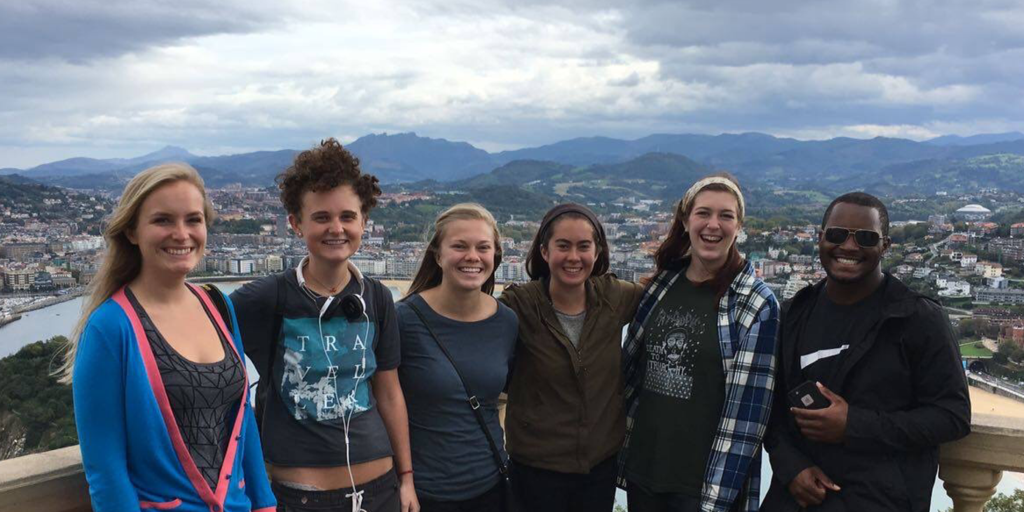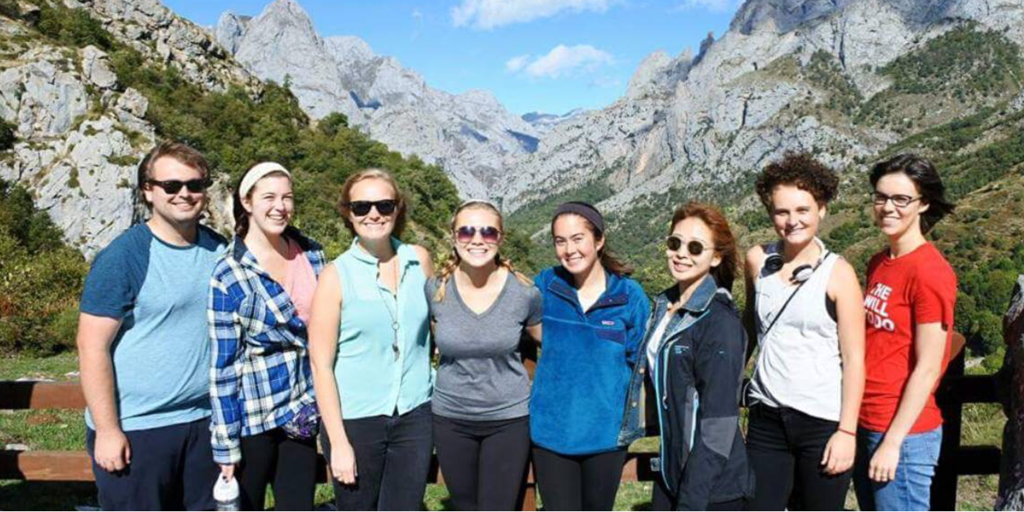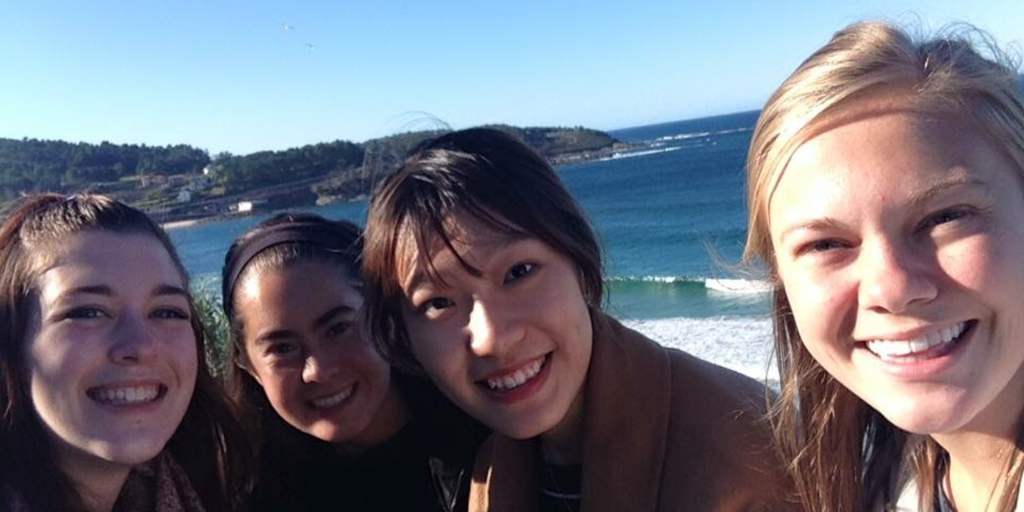 If you go out to the narrow roads, passageways, and alleys that make up a Spanish town between 2 and 5 in the afternoon, you will find the normally crowded streets ghostly empty. You can find a few people scattered in bars enjoying tapas and a midday drink, but most people go home to spend the break with their families.
If you go out to the narrow roads, passageways, and alleys that make up a Spanish town between 2 and 5 in the afternoon, you will find the normally crowded streets ghostly empty. You can find a few people scattered in bars enjoying tapas and a midday drink, but most people go home to spend the break with their families.
On my way to class in the morning, I can stop at a coffee shop for a café con leche and tortilla and there are still people drinking coffee before work with friends or reading the newspaper. My classes start at 9:30 in the morning, but the professor doesn’t arrive until a quarter ’til. The culture is much more relaxed and the mornings start late. You won’t find very many people out of their houses during the 8:00 hour.

A typical workday for the Spanish begins at 9:30 or 10:00. There is a break for siesta from 2 until 5. The midday siesta is important to many workers because most stores in Spain are really small. Often, only one person works in a store during the day, so their only break is during siesta. Even schools have a midday break. Children go to class at 9:00 am with a break at 2. They go back to school at 4 until 6. Most schools have an option that allows children to stay at school and eat lunch during the break, but it often costs money and can be expensive. After siesta, the worker returns to his job and arrives home at 8:30 or 9 in the evening. For this reason, dinner is usually served between 10 and 11. It is not unusual to see children running around the town with their parents at midnight on a school night. Spanish people typically have family time after dinner and go to bed around 1 or 2 am.
An alternative to eating dinner at home is going out for tapas. Tapas are small snacks that you receive for free when you order a drink. When you go into a bar, you can order a beer, wine, or grape juice, pay less than 2 euros, and receive free food. In some bars, there are a list of tapas to choose from, but other bars may just have one tapa. A group of friends or a family can eat dinner by going to two or three bars and eating tapas. Typical tapas include potatoes, chips and ham, calamari sandwiches, and morcilla.

Every Wednesday and Saturday from 8:00 until 2, you can find a flea market among the streets downtown and a farmers market in Plaza Mayor. The open air market is a popular source for fruits, vegetables, spices, cheeses, and meats. The plaza quickly fills with locals, and it is easy to strike up a conversation with the customers and vendors. The market was my favorite place to practice Spanish outside of class. There are three or four cheese vendors, but I always went to the same one. There was always a long line at his cheese truck, but no line at the other cheese stands. While in line, he would pass out samples to every kind of cheese that he had. My favorite kind of cheese is aged goat cheese. After buying cheese, he would encourage you to drink wine from the botello de vino hanging from the awning. It is a canteen pouch made out of leather, designed to keep the wine cooled all day. To drink from it, you hold it at arms length slightly above eye level and press on both sides of it with both hands. You open your mouth wide, and a stream of wine will leave the small hole in the top of the canteen. You just have to aim for your mouth and hope for the best — don’t wear white!
When you walk down the streets with a Spanish person, expect to stop often. In Spain, the cities are old and are designed to walk through. However, a ten minute walk can easily turn into a twenty minute one if you are walking with a local because the Spanish will stop to make small talk with people they know on the street. They greet each other with a kiss on each cheek and chat for a few minutes. No one is in a rush to arrive to their destination. For this reason, expect your Spanish friend to be at least ten minutes late to any plans you make.
Spain has a very social and laid-back culture. The workday schedule is designed to spend most of the day with friends and family. Even the weekly shopping is a social situation. Families are really close and most people visit their grandparents at least every other weekend. The elderly are taken care of and highly respected. The relaxed and leisurely lifestyle in Spain contributes to the stress-free labor force and keeps families strong. In Spain, happiness and relationships are prioritized higher than working and making money. The great Iberian siesta encompasses this mindset and encourages rest and revitalization in the middle of every day.





